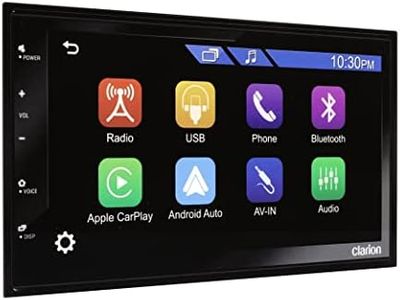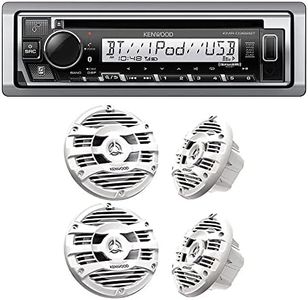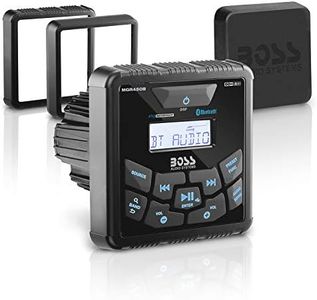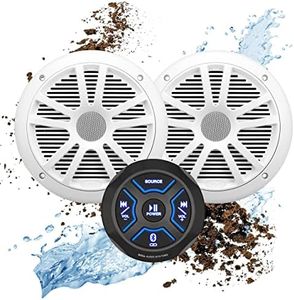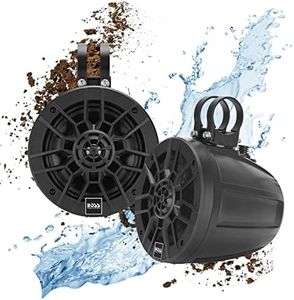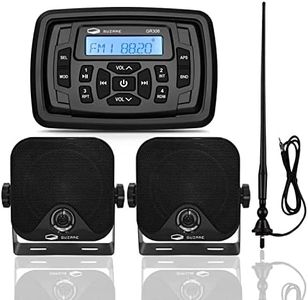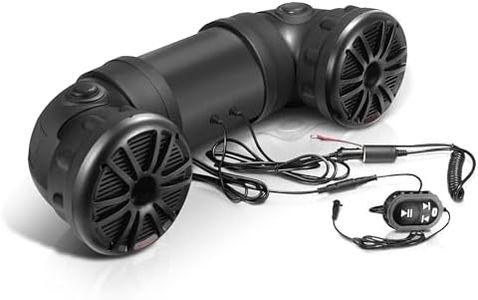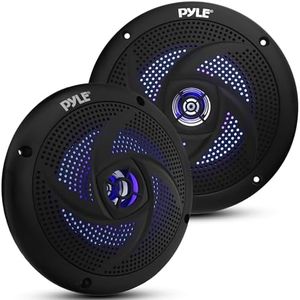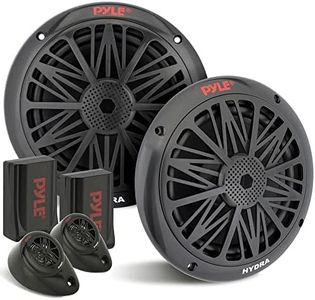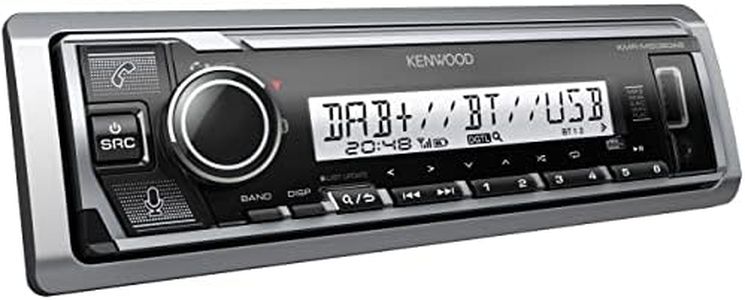We Use CookiesWe use cookies to enhance the security, performance,
functionality and for analytical and promotional activities. By continuing to browse this site you
are agreeing to our privacy policy
10 Best Marine Stereo Systems
From leading brands and best sellers available on the web.Buying Guide for the Best Marine Stereo Systems
Choosing a marine stereo system is an important step toward enjoying music, news, and entertainment while boating or spending time on the water. Unlike standard car or home stereo systems, marine systems are specifically designed to withstand water, salt, sunlight, and rough conditions often encountered at sea or on lakes. To pick the best marine stereo for your boat, you should focus on key specifications that determine not just audio quality but also durability and convenience. Understanding what each specification means and how it applies to your needs will ensure you get a stereo system that provides great sound, fits your installation preferences, and stands up to the marine environment.Waterproof RatingThe waterproof rating tells you how much protection the stereo has against water, ranging from splash resistance to being fully submersible for a period of time. Common ratings use terms like IPX5, IPX6, or IPX7, with higher numbers offering more protection. IPX5 means the system can handle water jets, IPX6 is resistant to powerful water jets, and IPX7 allows brief immersion in water. If you expect heavy splashing or occasional downpours, aim for IPX6 or IPX7 for peace of mind. For sheltered installations, a lower rating may be sufficient, but being cautious with a higher rating is generally safer since weather can be unpredictable at sea.
Corrosion ResistanceCorrosion resistance indicates how well the stereo system can handle exposure to salt air and water, both of which can cause rust and damage over time. Some stereos use special coatings or materials such as stainless steel, coated circuit boards, or sealed connectors to protect against corrosion. If your boat operates in saltwater, prioritize models specifically labeled as salt-resistant or marine-grade. For freshwater boating, corrosion risk is lower, but it's still a good idea to choose a system with at least basic protection for longevity.
Power OutputPower output describes how loud and clear the audio will sound, usually measured in watts per channel. Systems typically range from around 20 watts per channel for basic use up to 50 watts or more per channel for higher-end units. A lower power output is fine for quiet enjoyment and smaller boats, especially if you won't be competing with engine or wind noise. Larger boats, outdoor decks, or anyone wanting music to carry over a lively atmosphere should look for higher power output to maintain clarity and volume.
Connectivity OptionsConnectivity options refer to the ways you can play music or connect devices to the stereo, such as Bluetooth, USB, aux-in, AM/FM radio, or compatibility with satellite radio and streaming services. Bluetooth is great for wireless music from your phone, while USB ports let you connect flash drives or charge devices. If you want to play older devices, an auxiliary input is useful. Decide which sources you'll use most—streaming playlists, radio, or stored music—and pick a system that supports those connections for a smoother experience.
Display and ControlsThe display and controls determine how easy it is to operate the system, especially when conditions on the water can be bright or bumpy. Look for displays that are bright, easy to read in sunlight, and resistant to fogging or staining. Simpler, large buttons can be better for use with wet or gloved hands. If you plan to control the stereo from a distance or multiple areas on the boat, check for remote controls or compatibility with control panels. Select a system with a user interface that matches your preferences and the realities of using electronics on a boat.
Speaker Compatibility and ExpansionSpeaker compatibility and expansion options indicate how many and what type of speakers you can connect, as well as whether you can add amplifiers or subwoofers. Some systems only support two speakers, while others can power four or more or have preamp outputs for adding extra equipment. Consider the size of your boat and where you want sound coverage—larger boats or those with multiple zones (like cabin and deck areas) benefit from systems that allow more expansion. Make sure to match the stereo’s speaker outputs to your boat's audio needs now and in the future.

